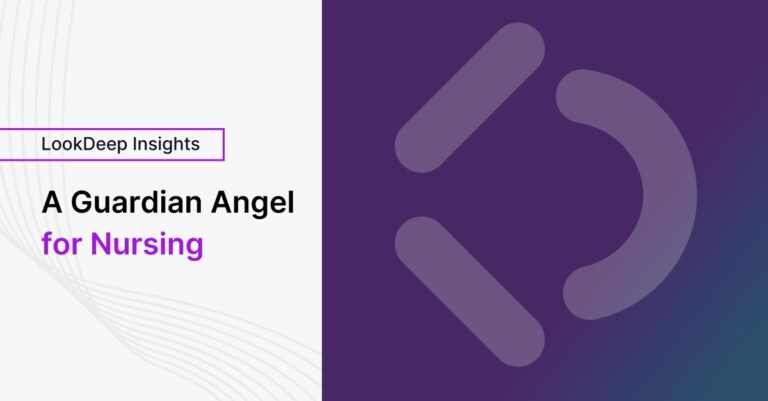A Guardian Angel for Nursing
Nursing is one of the most challenging and rewarding careers, but with the current staffing crunch, nurses are stretched thin, leaving little time to spend with each patient. According to a recent report by the American Nurses Association, the shortage of registered nurses is projected to reach over 1 million by 2030. This situation presents many challenges for providing quality care, and it’s not surprising that nurse burnout is a growing concern. A study by the National Academy of Medicine found that one in three nurses experience symptoms of burnout.
However, what if every nurse could have an assistant to observe the patients when they are not there?
Imagine a person that could observe what is happening with the patient – how much and when they are moving, when they are moving from bed to chair, their patterns of eating and talking, how much they are alone, how they are resting, when they are turned, etc.. Further, what if this person could do 70% of assessments, like CAM for Delirium and BMAT for Mobility, and other inputs related to documentation? This “person” is what computer vision and AI could do for nursing. With the help of computer vision algorithms, cameras can detect and interpret a patient’s movements and behaviors, providing critical information to the nursing staff.
Person + AI > AI
Post-Covid, cameras are becoming more prevalent in patient rooms – computer vision and AI can turn these cameras into flexible sensors that help nurses better care for patients. In some cases, this information could be used directly by the bedside nurse, for example, when was the last time the patient was visited or turned, but the power of this technology is multiplied when paired with a virtual nurse that can support the bedside team.
Virtual nursing has already been used for tasks such as admission and discharge, but patient observing AI combined with a virtual nurse expands the potential dramatically – taking real workloads off the bedside nurse’s plate so they can focus more on hands-on care. Also , this combination supports less experienced nurses by offering both human judgment and more insight on what is happening with their patients.
To make this a reality, the industry needs low-cost, ubiquitous video in patient rooms. In addition, if technology natively supports the combination of AI and nursing expertise (human + AI) it will dramatically increase the pace of deployments by 1) increasing the effectiveness of the AI capabilities and 2) more easily folding into clinical workflows. A survey by Accenture found that when AI and human expertise are combined, organizations see a 68% improvement in the speed of their deployment. This technology creates more trust, eases change management issues, and brings together video information and the broader context of care in the EHR.
In conclusion, computer vision and AI has the potential to revolutionize patient care in hospitals, helping both patients and nurses. By providing virtual assistance and a comprehensive view of the patient, we can improve the overall quality of care and make a real impact on the health and well-being of those in our care. By investing in this kind of technology, we can ensure that patients receive the highest level of care, and nurses can work in an environment that supports their well-being.


